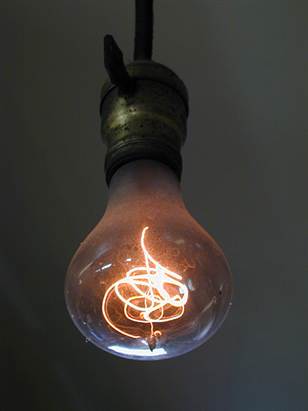The traditional incandescent light bulb is in the news again in Hong Kong where an outright ban was proposed by government but vetoed by a lack of interest in that extreme measure by the general population.
Robert Hanson, who has studied the issue – and holds a PhD in the Built Environment, besides being a qualified and experienced barrister, plus experience as an economist in the
energy industry calculating energy prices, says: “Compact fluorescent lamps (CFLs) and Light Emitting Diodes (LEDs) produce a different type of light – some people need incandescent light – they are not substitute products.”
He also wants the Hong Kong government to stop referring to the ‘recycling’ of CFL and LEDs.
“The government should make clear that CFLs and LEDs are hazardous waste. This is a really serious problem as people associate recycling with things like paper, cans and bottles – the purpose of collecting CLFs and LEDs is to prevent harm to humans from the toxins of lead, mercury vapour and arsenic. Also, to stop these items entering landfills where the toxins leak into soil and water.”
“In work places the workers are regularly exposed to broken CFLs and LEDs because the management think that because the government is promoting them as Green – they must be safe,” Hanson continues. “Of course this is what the bulb makers want people to think – whilst they hide behind a stack of legal exclusion clauses – ‘not suitable for rooms with sealed windows and air cons, clean up instructions, not suitable for landfills, need to be at least 6 feet from your head! Why is the government behaving like sales agents for such as Philips – who own many of the patents for CFLs and LEDs?”
Front line workers are suffering because the government refers to ‘recycling’ rather than emphasising that these bulbs contain three out of four of the most harmful toxins to humans and the environment – and this is why they need to be disposed of in a special way consistent with other hazardous wastes.
While Friends of the Earth are disappointed and see the more timid measure as a regressive move with the announcement that previously released plans for a ban on energy inefficient incandescent light bulbs have been scrapped in favour of a voluntary scheme to phase them out from 2014. The decision was made by environment department officials who say a public consultation that closed more than a year ago found no majority public support for a mandatory approach.
Instead, they will ask light bulb suppliers and retailers to sign a charter pledging not to replenish stocks of selected bulbs from the first quarter of next year and stop selling them by the end of the year.
Friends of the Earth says this flies in the face of international trends.
Traditional light bulbs, sold cheaply, consume more energy than alternatives such as compact fluorescent lamps (CFLs) as over eighty per cent of the energy goes to heat rather than light (incandescents convert about 86% of energy to heat; CFLs and LEDs are not much better (80 – 84%), the energy consumed in the circuitry. But CFLs carry more toxic elements.
When it comes to lasting longer that’s not true at all – an incandescent light still burns 110 years after fitting at Livermore Fire Station, California!
In the home environment the incandescent will outlast the CFL – CFL’s require electric circuits to make them work (most of the electricity is consumed these circuits rather than producing
light). Also the light quality of CFL’s is poor – the measured light includes electro-magnetic fields (EMF’s) and harmful rays while in contrast incandescents produce all useable healthy light.
The electric circuits in CFL’s burn out after about 15 months. Incandescents are simple – use fewer resources and need not go wrong. It is not an urban legend that incandescents used to last for 5000 hours but Phillips and GE made a pact to limit these bulbs to 1000 hours and that Philips also bought up companies guaranteeing incandescents for 5 years – Philips then closed these companies down!
When it comes to disposal, CFL’s leak mercury into landfills – result long term poisoning of water and vegetation.
“This is all about money,” says Hanson. “Philips want to sell you a CFL/ LED for HK$35 to HK$100 – the only way they can do that is if they can ban incandescent bulbs – hence Philips pay a lot of money to green groups to promote global warming myths and the need to use LED and CFLs – green groups then lobby governments on behalf of the industry.”
Philips, like Shell in the oil and gas industry, and others, also donate a lot of money to universities and think tanks to promote CFLs. This is why climate change claims must be verified by proper science. Many claims are false and are only made because of salaried research.
CFL’s can only produce the figures manufacturers claim under lab conditions using special power factor correction equipment and computer simulated modelling – such modelling is disclaimed in today’s existentially based climate research.






